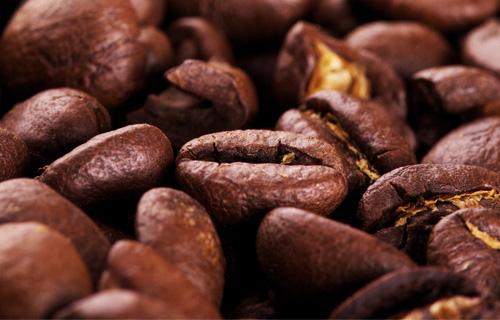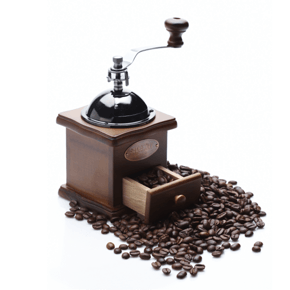The distribution of Ethiopian coffee, the story of Ethiopian coffee
Follow the caf é (Wechat official account vdailycom) and found that Beautiful Cafe opened a small shop of its own.
Distribution of coffee in Ethiopia
In Ethiopia, Kaffa, Gemma, Limu and Sidamo are well-known producers of Ethiopian coffee.

The world-famous Ethiopian coffee is mainly:
1. Limu coffee grows between 1400 and 2000 meters above sea level. Wash the coffee. Excellent quality, with strong nut aromas, suitable acidity, with the intensity of wine. The annual output is 29000 tons.
two。 Gima Coffee grows between 1400 and 1800 meters above sea level. Sun-baked coffee. Slightly sour, with nutty aromas and a long finish. The annual output is 70000 tons.
3. Gamby coffee grows between 1500 and 2300 meters above sea level. It is gourmet coffee with moderate acidity and fruity aroma. The annual output is 34000 tons.
4. Yejashafi coffee grows between 1500 and 2200 meters above sea level. Mocha flavor, with floral and spicy aromas. The average annual output is about 28000 tons.
5. Sidamo Coffee grows between 1400 and 2200 meters above sea level. Suitable acidity and high quality. The average annual output is about 37000 tons.
6. Harald coffee grows on highlands above 2700 meters above sea level. It is the best coffee in the world, medium acidity, intoxicating exotic flavor, with slightly tipsy, dried fruit aroma, is pure mocha coffee. The average annual output is about 26000 tons.
A short story about the origin of Ethiopian coffee
Ethiopia has a place called Kafa. Local residents have found that cattle and sheep become excited, powerful and a little crazy after eating a plant with little red beans. Someone picked the red bean and tried to chew it a little. It tasted good, and then chewed on it, and slowly became energetic and refreshed. Later, people began to pick it and consciously grow it, regard it as food, drink and medicine, more and more inseparable from it. Because it came from a place called Kafa, the world gradually named it Coffee.
Ethiopian Coffee ceremony
For most Ethiopians, whether in towns or in rural areas, it is inconceivable that they do not drink a few cups of coffee during the day. They drink coffee and have snacks every morning, and they may eat like this many times a day. Coffee is also the best drink offered by Ethiopian families to distinguished guests, and for exchanging views with neighbors and friends or discussing activities between neighbors or between larger towns, it's the best occasion for coffee drinking ceremonies.
Coffee is to Ethiopia what tea is to China. Tea has a delicate tradition of drinking tea, and Ethiopia also has a very beautiful traditional ceremony of drinking coffee, although it is not as popular as the tea drinking ceremony. In Ethiopia, there is no formal training in this area, unlike in China, where young people receive formal training even in vocational schools.
In Ethiopia, it is forbidden for men to make coffee, and making coffee is strictly a woman's traditional job, so the coffee ceremony is presided over by women.
The corner of the coffee drinking ceremony should be cleaned and paved with freshly cut grass before the coffee set is brought in. Fresh grass has a certain symbolic meaning, it is thought to bode well, can gradually emit a fresh smell, and can also be used as an eye-pleasing decoration for drinking rituals.
In Ethiopia, most of the main utensils used to make coffee at coffee drinking ceremonies are traditional or handmade, such as pottery pots (Jabina) and crushers (or Mukcha). All Ethiopian women have these special utensils for daily coffee making. It is unthinkable to brew coffee in an aluminum pot, which will only destroy the natural taste of coffee beans.
In the past, coffee beans were roasted with a flat pottery vessel called "mitad", but now coffee beans are roasted on a small flat disc, which is washed by hand many times before roasting, and then mashed the black or brown coffee beans in a wooden Mukcha until they are powdered.
Officially invited guests are happy to hear the sound of mashing coffee beans so that they can then fully enjoy drinking coffee. With the crushing of coffee beans, there must be something encouraging, a sensory thrill, which makes drinking coffee a wonderful experience.
Coffee is usually boiled in a pottery pot on a wooden or aluminum tray with a dozen or more white round clay cups on the tray. The hostess who makes coffee usually has her own unique preference for small, round and different colored clay cups. Generally speaking, the coffee that the guests drink will be served in their own designed cups.
Lighting incense is an integral part of the coffee drinking ceremony, and once the coffee pot containing boiled coffee is removed from the fire, the hostess will quickly light the incense on a small piece of clay and put it by the door. The smell of incense emanates outside the door, and the hostess who invites the neighbor to have coffee will formally invite the eldest guest to bless you, and the elder will preside over the ceremony, who whispers in his or her mouth. thank the gods of the house (also known as Adeba) and pray for peace and joy throughout the day, wishing the sick recover, the poor out of poverty or find a job.
Ethiopian coffee also has a spiritual bond, and it is often used as a way to communicate with the gods in the house or village. Before the hostess pours coffee to each cup, she pours half a cup of coffee to wash each cup, and then spills it on the floor and presents it to the house god. Because Ethiopians believe that the house god is present every time the coffee is made, it is believed that the Ethiopian coffee drinking ceremony evolved from a ceremony dedicated to the house gods.
Steaming coffee is poured into pottery cups to entertain guests. Depending on the taste of the guest, the coffee is served with salt or mixed with a spoonful of butter or sugar. The host will bring snacks to the guests before serving coffee. The snack may be baked buckwheat cakes, bread or a piece of Yingjiela (a round pancake made from the unique cereal bran of Ethiopia.)
What makes the Ethiopian coffee drinking ceremony unique and interesting is that the coffee is served three times in a row (called Agbor, Tona and Bereka, respectively), by adding hot water to the pot and boiling it three times in a row, so that after each boiling, the coffee becomes lighter and whiter. Guests should stay in the same place during the coffee drinking ceremony, because it is very impolite to leave during the coffee drinking ceremony, which may last for an hour, sometimes even two hours, depending on the situation.
At the end of the ceremony, all the people present, especially the elderly, would like to wish all the guests good health, wealth and safety.
In the end, all utensils used in the coffee drinking ceremony should be washed and neatly arranged and placed until the next ceremony. The cup and cup box are covered with a neat piece of cloth, and the whole set of utensils should be put in a special place for next use.
The irritating effect of coffee can be proved by medical data, and this effect has been proved in the daily life of most Ethiopian farmers, who must drink a cup of coffee even if they don't eat food in the morning. otherwise, you can't start working on the farm.
You can enjoy this Ethiopian coffee drinking ceremony in many large hotels in Addis Ababa, which will give you a meaningful experience and experience the interesting culture and traditions of Ethiopia from one side.
Important Notice :
前街咖啡 FrontStreet Coffee has moved to new addredd:
FrontStreet Coffee Address: 315,Donghua East Road,GuangZhou
Tel:020 38364473
- Prev

Geographical planting area of Coffee in Ethiopia: an introduction to the Flavor characteristics of boutique Coffee in Dama, Ethiopia
Follower Cafe (official Wechat account vdailycom) found that the Beautiful Caf é opened a small shop of its own Ethiopia, located at 15-9 north latitudes, is a landlocked country in northeast Africa. It is bordered by Djibouti and Somalia in the east, Yemen across the Red Sea, Sudan in the west and Kenny in the south.
- Next

About Ethiopia Moka Harar Yejia Shefi Introduction
Pay close attention to the coffee comment (Weixin Official Accounts vdailycom ) and find that the beautiful coffee shop opened its own small shop. More than 100 years ago, the whole Middle East non-coffee countries did not have a prosperous outward transportation industry at that time. Yemen Mocha was a main export port near the Red Sea at that time. Most of the coffee produced in Africa was first transported to Yemen Mocha Port and then exported to Yemen.
Related
- Detailed explanation of Jadeite planting Land in Panamanian Jadeite Manor introduction to the grading system of Jadeite competitive bidding, Red bid, Green bid and Rose Summer
- Story of Coffee planting in Brenka region of Costa Rica Stonehenge Manor anaerobic heavy honey treatment of flavor mouth
- What's on the barrel of Blue Mountain Coffee beans?
- Can American coffee also pull flowers? How to use hot American style to pull out a good-looking pattern?
- Can you make a cold extract with coffee beans? What is the right proportion for cold-extracted coffee formula?
- Indonesian PWN Gold Mandrine Coffee Origin Features Flavor How to Chong? Mandolin coffee is American.
- A brief introduction to the flavor characteristics of Brazilian yellow bourbon coffee beans
- What is the effect of different water quality on the flavor of cold-extracted coffee? What kind of water is best for brewing coffee?
- Why do you think of Rose Summer whenever you mention Panamanian coffee?
- Introduction to the characteristics of authentic blue mountain coffee bean producing areas? What is the CIB Coffee Authority in Jamaica?

